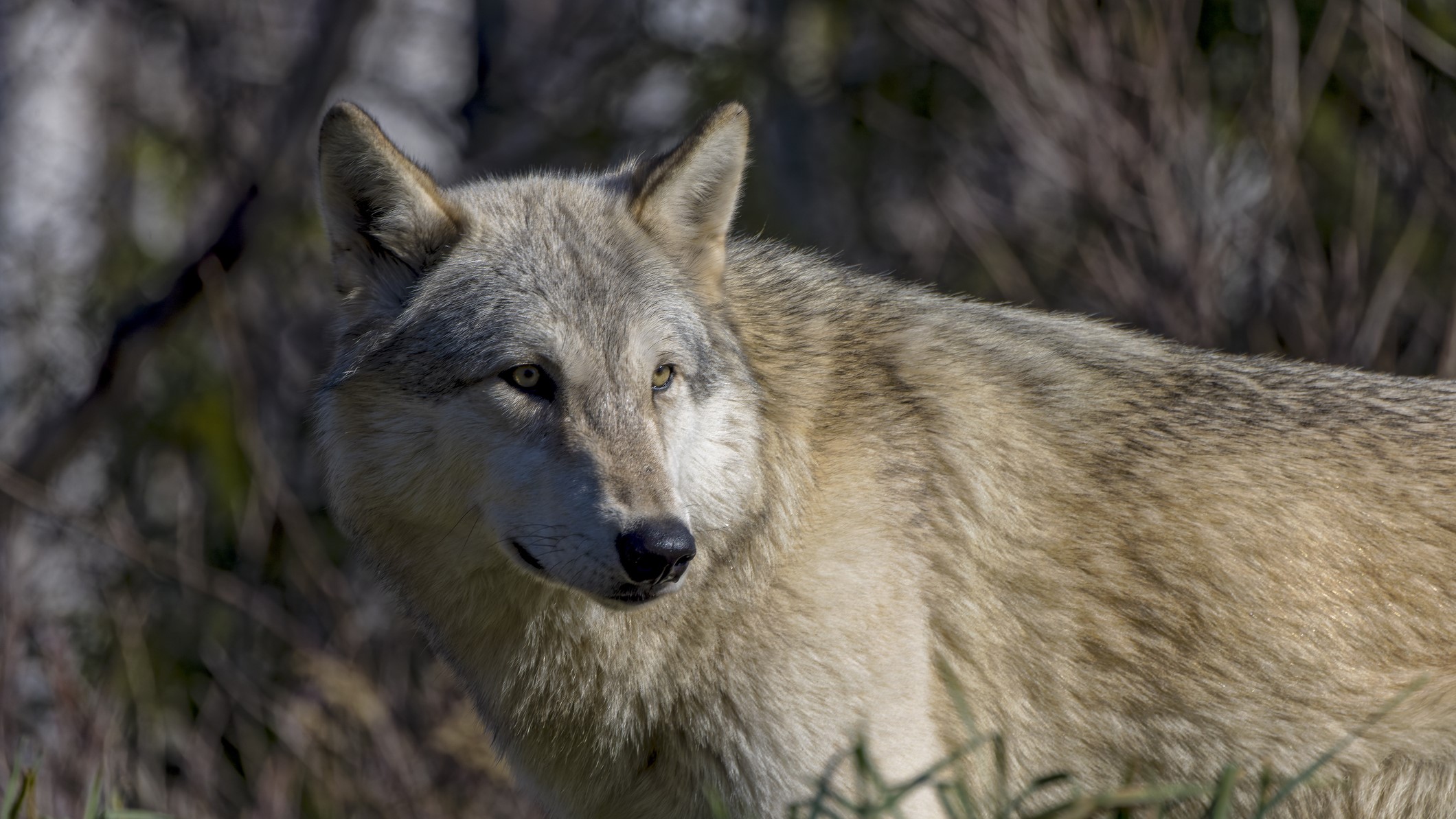
Genetic tests have revealed that an animal killed in a legal coyote hunt in Michigan's Calhoun County was actually a gray wolf, state officials say. But experts don't know how the animal got there in the first place.
Calhoun County is located in the southern half of Michigan's Lower Peninsula, where no gray wolves (Canis lupus) have been sighted for over a century. A population of around 630 gray wolves inhabits the state's Upper Peninsula, 250 miles (400 kilometers) away, and some wolves have occasionally been spotted in the northern half of the Lower Peninsula — roughly 130 miles (200 km) from Calhoun County.
"While rare, instances of wolves traversing large distances have been documented, including signs of wolves in recent decades in Michigan's Lower Peninsula," Brian Roell, a biologist and large carnivore specialist with the state's Department of Natural Resources (DNR), said in a statement.
The most recent reported gray wolf sighting in the northern Lower Peninsula was in 2014, when biologists from the Little Traverse Bay Bands of Odawa Indians — whose headquarters are located 220 miles (350 km) north of Calhoun County — spotted a wolf on a trail camera during an eagle survey, according to the statement.
However, the presence of gray wolves as far south as Calhoun County is highly unusual, and the DNR is investigating how and why the animal ended up there.
The gray was killed during a legal hunt in January. A hunter said he mistook the wolf for a large coyote.
Related: Are dogs smarter than wolves?
The animal weighed 84 pounds (38 kilograms), which is four times as heavy as a western coyote (Canis latrans) and double the average weight of an eastern coyote — a hybrid species with both coyote and wolf parentage that colonized areas of North America after the extirpation of wolves in the early 20th century.
It's unlikely the gray wolf belonged to an established population in the southern Lower Peninsula and there is no need for concern about broader wolf presence in this part of Michigan, DNR experts said.
"This is an unusual case, and the DNR is actively delving into the matter to learn more about this particular animal's origin," Roell said.
Wolves once roamed all across Michigan, but persecution by European settlers and a bounty established in 1838 pushed the population out of the Lower Peninsula.
Intense logging in the early 20th century threatened the remaining wolves in the Upper Peninsula, but the population bounced back after lawmakers repealed the bounty in 1960, and the animals have been under the protection of the federal Endangered Species Act since 1973.







